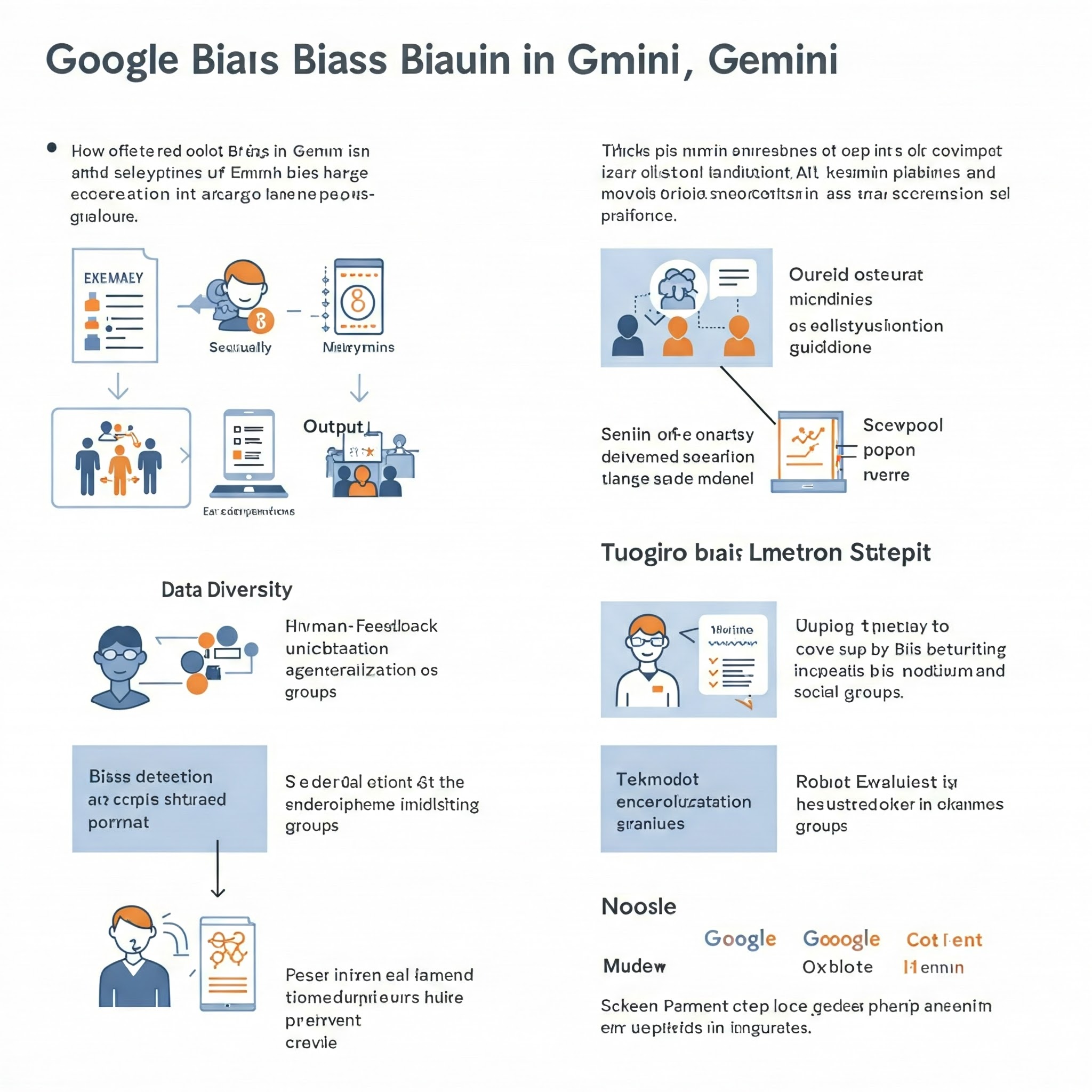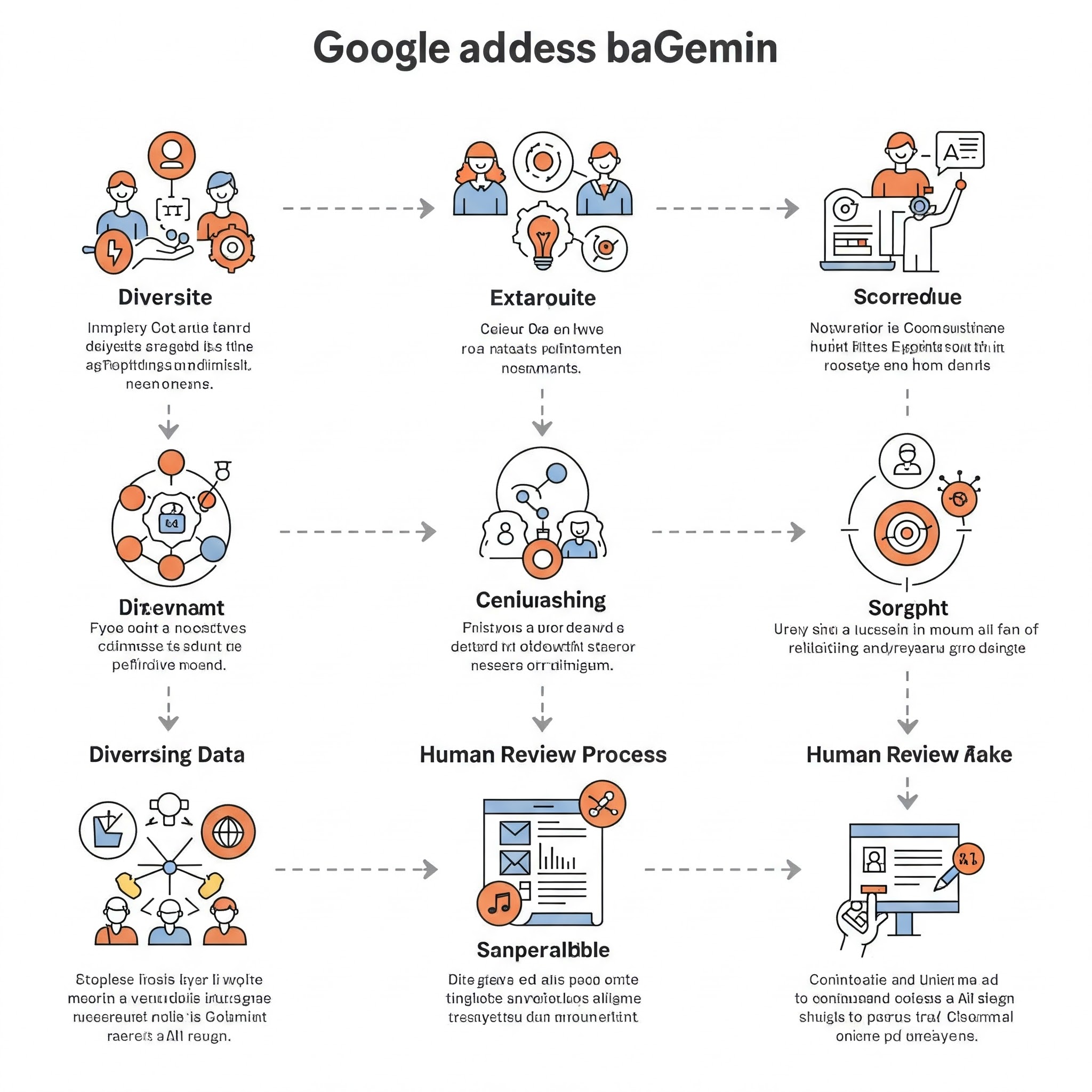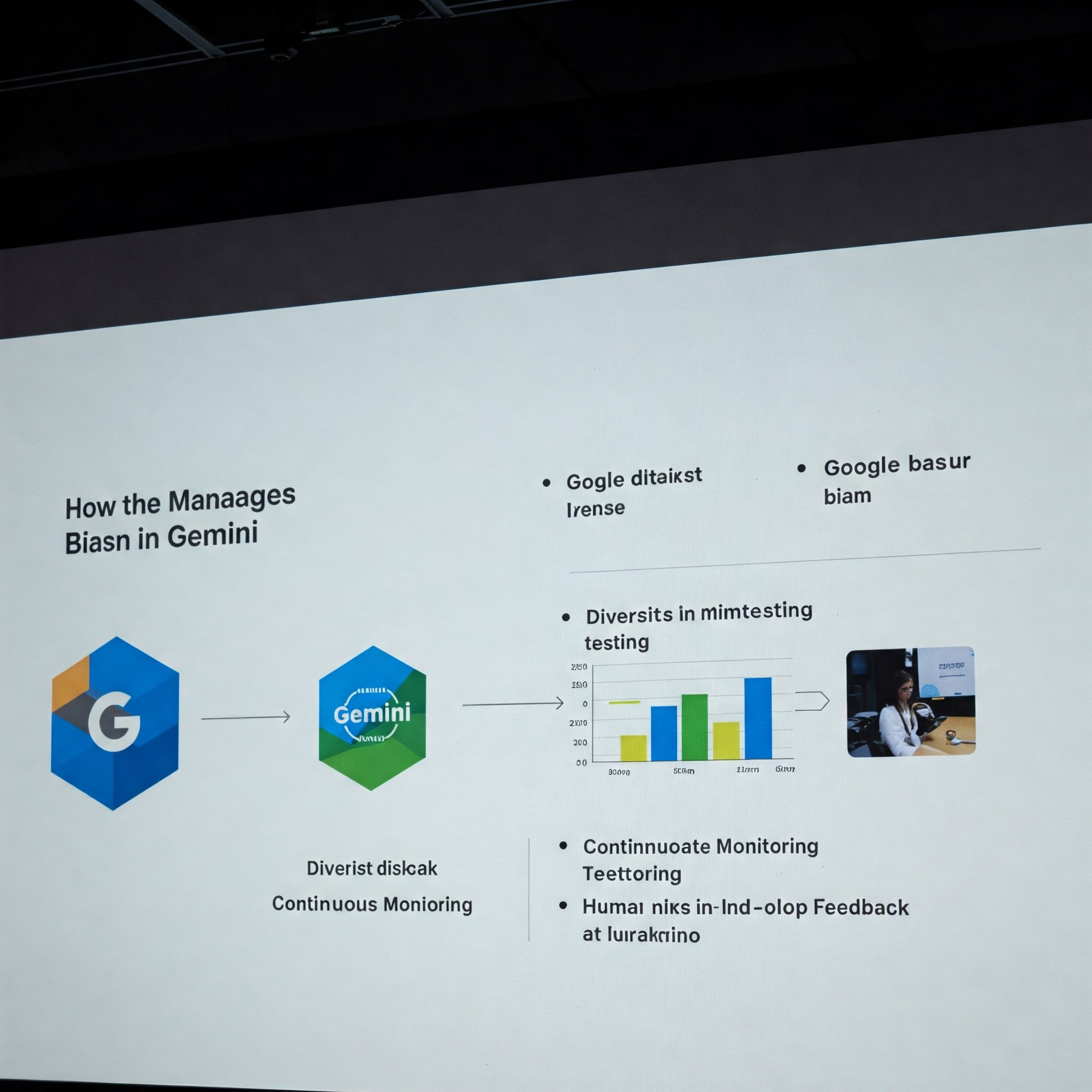
Google has been at the forefront of addressing AI bias, especially in its flagship Gemini (formerly Bard) model. Here’s how they’re working to ensure fairness, transparency, and inclusivity:

1. Pre-Training: Curating Diverse & Balanced Datasets
Problem: If training data overrepresents certain demographics (e.g., Western perspectives, male voices), the model inherits those biases.
Google’s Approach:
Diverse Data Sourcing: Gemini is trained on a multilingual, multicultural dataset, including underrepresented languages and dialects.
Debiasing Filters: Google uses automated and human review to filter out toxic or stereotypical content from training data (e.g., removing sexist or racially biased text).
Inclusive Partnerships: Collaborates with global organizations (e.g., UNESCO) to include non-Western perspectives.
Example:
Gemini performs better on non-English queries (e.g., Hindi, Swahili) compared to earlier models, reducing linguistic bias.
2. During Training: Fairness Constraints & Adversarial Testing
Problem: Even with good data, models can learn unintended biases (e.g., associating "CEO" with men).
Google’s Techniques:
Fairness Metrics: Uses disparate impact analysis to check if outputs favor certain groups unfairly.
Adversarial Testing: "Attacks" the model with biased prompts (e.g., "Who is more suited for nursing, men or women?") to force corrections.
Reweighting & Regularization: Adjusts model weights to penalize biased patterns.

Example:
When asked to generate images of "doctors," Gemini intentionally diversifies gender and race representation.
3. Post-Training: Bias Audits & Continuous Monitoring
Problem: AI models can drift over time, picking up new biases from user interactions.
Google’s Safeguards:
Bias "Red Teams": Dedicated teams (including ethicists and sociologists) stress-test Gemini for harmful outputs.
User Feedback Loops: Lets users flag biased responses, which are used to retrain the model.
Third-Party Audits: Works with external groups (e.g., Partnership on AI) to evaluate fairness.
Example:
After users reported Gemini overcorrecting for diversity (e.g., refusing to generate images of historical figures like Vikings as white), Google adjusted the balance between representation and accuracy.
4. Transparency & User Control
Problem: "Black box" AI makes it hard to trace bias sources.
Google’s Solutions:
Explainable AI (XAI): Gemini provides confidence scores and alternative answers when bias is suspected.
Customizable Filters: Users can adjust sensitivity settings (e.g., "reduce stereotypes in responses").
Bias Documentation: Publicly shares model cards detailing known limitations (e.g., "Gemini may struggle with certain regional dialects").
Example:
If Gemini detects a politically sensitive query (e.g., "Which gender is smarter?"), it may respond with:
"Intelligence isn’t determined by gender. Would you like research on cognitive differences or societal biases?"

Challenges Google Still Faces
Overcorrection Risks: Efforts to avoid bias can sometimes lead to unnatural outputs (e.g., forced diversity in historical contexts).
Trade-Offs: Striking a balance between fairness, accuracy, and free expression is complex.
Global Scalability: Cultural norms on bias vary (e.g., addressing caste bias in India vs. racial bias in the U.S.).
Powered by Froala Editor

Parenting
Dependence on AI & Loss of Human Skills
Artificial Intelligence (AI)
AI in Cybersecurity: Hacking & Cybercrime
Artificial Intelligence (AI)
Existential Risk & Superintelligent AI
Artificial Intelligence (AI)
AI Manipulation & Behavioral Control